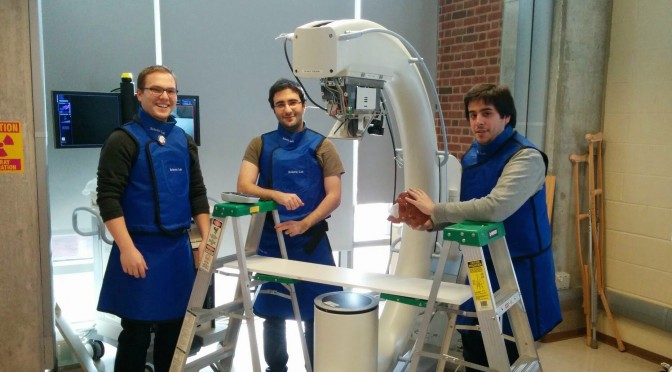The newest addition to LCSR equipment allows the fusion of X-ray and camera imaging to enable intuitive navigation for medical interventions.
A Brief History
Nassir Navab and his colleagues Ali Bani-Hashemi and Matthias Mitschke invented the Camera-Augmented mobile C-arm in 1998 at Siemens Corporate Research in Princeton New Jersey. The early concepts and implementation was first presented at IEEE IWAR in 1999 in San Francisco. While the first system was built and tested on phantoms at Siemens Medical Solutions in Erlangen Germany, a set of major research projects using this innovative system was conducted in Munich, when professor Navab joined TU Munich in September 2003. This system allowed the development of many novel techniques including the first parallax-free X-ray stitching, which was presented at MICCAI 2009 and received the young investigator award. Later on this system was one of the first augmented reality solutions introduced inside real operating rooms and was used to improve the outcome for forty patients going under orthopedics and trauma surgical procedures.
Camera-Augmented Mobile C-Arm and Cone-Beam CT at LCSR

In December 2014, a recent prototype version of this system running on a mobile C-arm with 3D reconstruction capability has been installed at LCSR, allowing JHU researchers to start strong collaborations with surgeons at JHU to develop break-through Augmented Reality solutions for orthopedics and vascular surgery applications. The system is now available also for professional and public demonstrations within the Mock-OR at LCSR.
